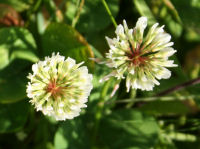
People look to the plant world first for food and drink, and then for materials to clothe and shelter them and to form twine and cord for binding and baskets for holding. These materials were sometimes whole leaves, stems or roots, laid like thatch, or plaited; and sometime fibres taken out of plants and then spun and woven. People also found ways to turn parts of animals into fabrics - silk from insect cocoons, wool from sheep.
Today, many of us take for granted things like denim jeans, a silk top, a woolen jute-backed carpet. But the use of natural fibres has a long and tortuous history. Here, we look at the natural, mainly plant, fibres and the industries based on them. And as for other crops, lack of home production and reliance on imports become main themes.
The fibres panel shows examples of raw and processed plant and animal fibres: the four images to the left, from top left - wool cast off by North Ronaldsay sheep, section of African grass mat, sisal rope, jute fibre; vertical strip - part of rug woven from North Ronaldsay sheep's wool; top right, silk dress fabric from Laos; bottom right, jute cloth. All photographs Living Field collection.



